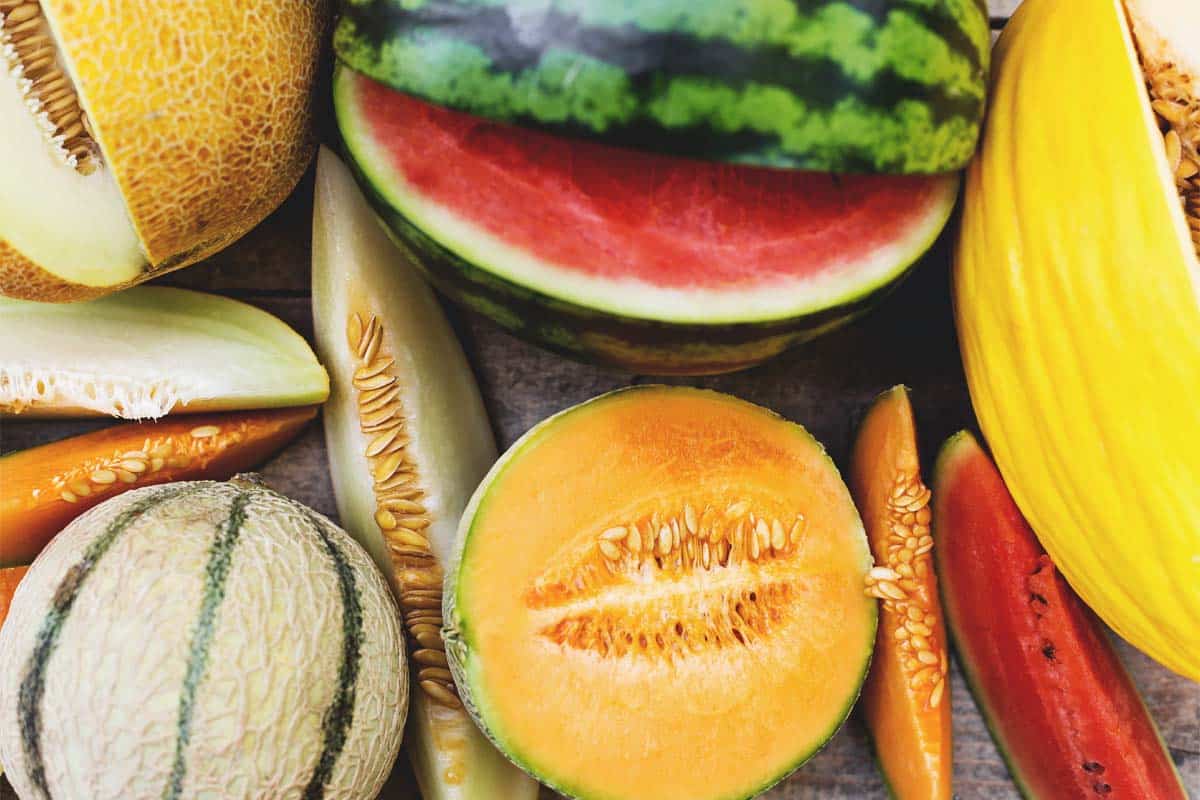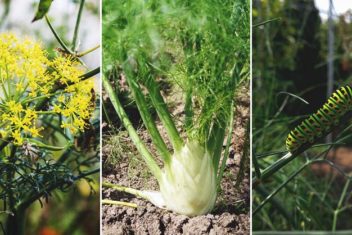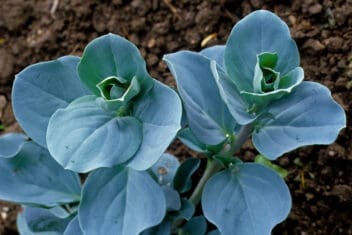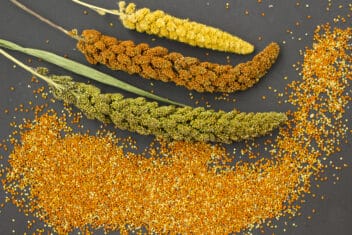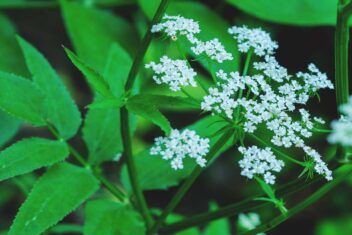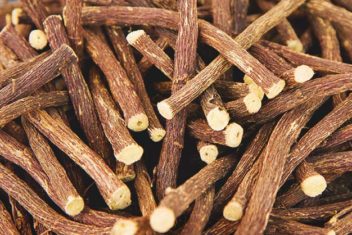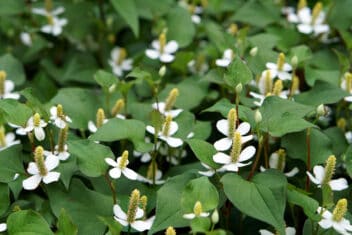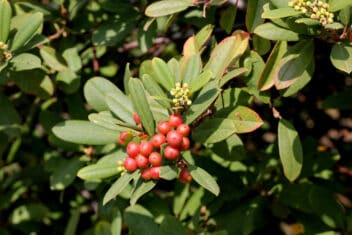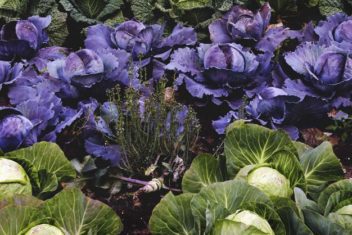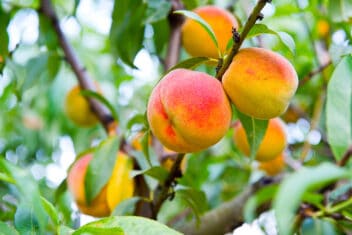Melons are tricky to grow in my neck of the woods. The variable climate isn’t quite right for heat-loving melons to thrive. With a bit of tenacity and luck, though, anyone can succeed at growing garden-fresh melons – even me!
In hot weather, melons need the standard TLC that all edible plants crave. In cooler locales, you might need to invest in crop protection tools like hoop tunnels or a greenhouse to succeed at growing this finicky fruit.
Keep reading to find out how to grow super tasty melons perfect for a late summer BBQ.
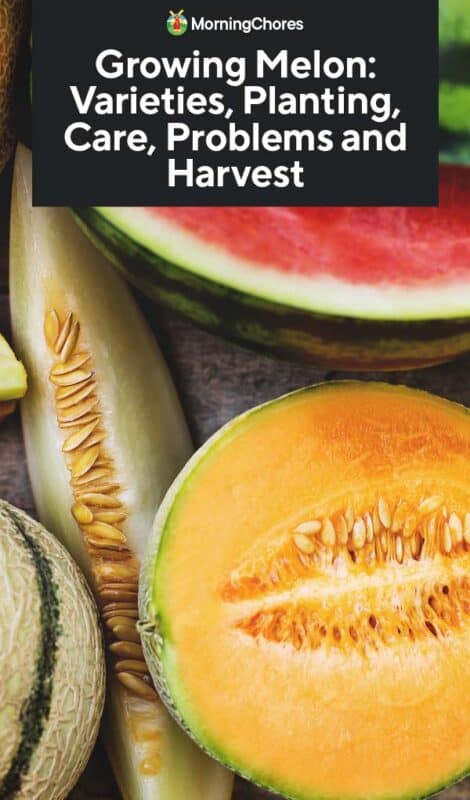
Melon Varieties
Melons are fruits in the Cucurbitaceae family. This family also includes cucumber, squash, and pumpkin. There are several types of melons, varying from candy-sweet cantaloupe to striking bitter varieties.
Honeydew: Honeydew melons are types of muskmelons that have smoother skin. The flesh can be green, white, or orange. They mature at a rate somewhere between cantaloupes and watermelons.
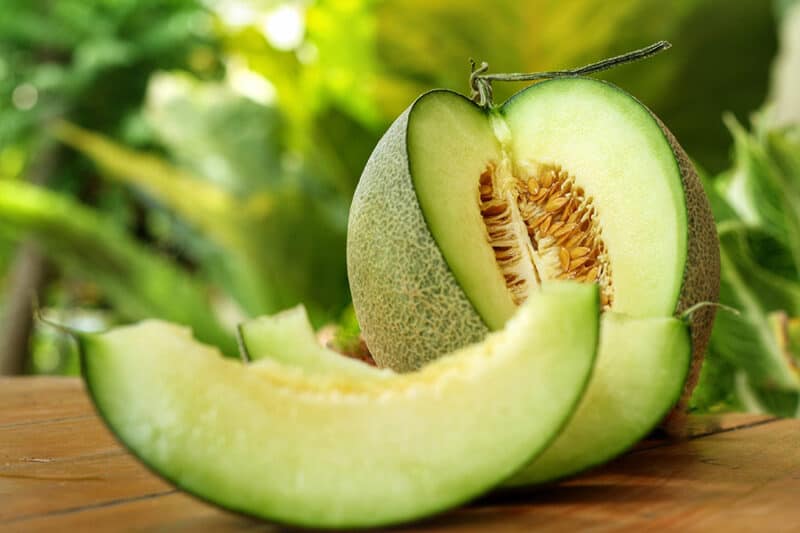
Honeybrew, Lime Light, and Venus are all exceptionally tasty varieties to plant. They mature between 90 and 95 days.
Cantaloupe: Cantaloupes – another type of muskmelon – have orange or sometimes green flesh with netted skin. They mature faster than watermelons.
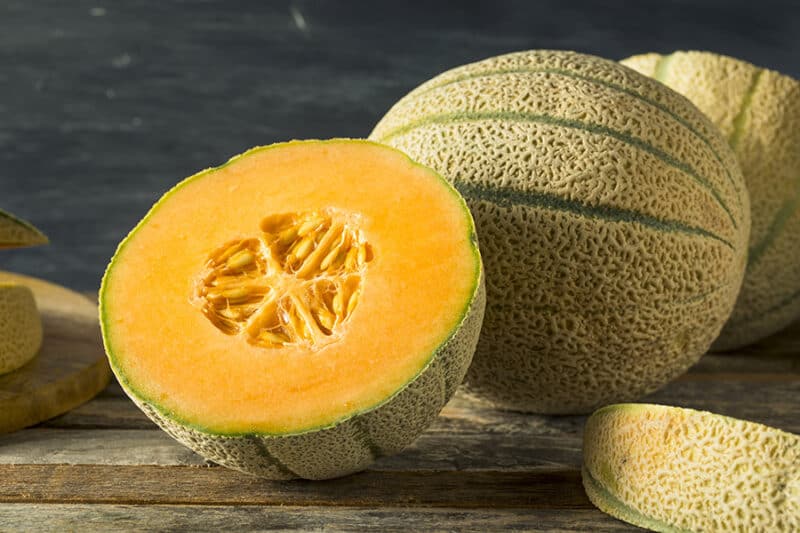
Check out Ambrosia, Iriqoious, or Sweet Dream varieties. All are incredibly flavorful and resistant to disease. They mature around 90 days.
Other Muskmelons: Beyond honeydew and cantaloupe, the muskmelon family also includes casaba, Crenshaw, and hybrid melons.
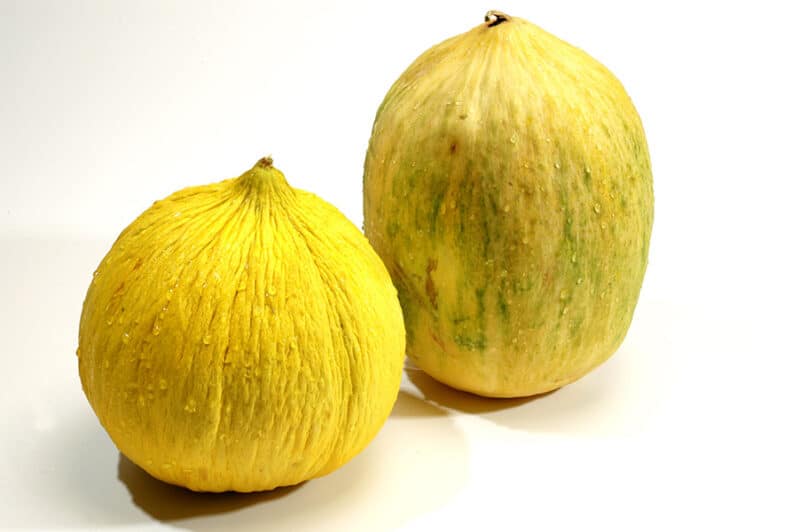
Try Casaba Golden Beauty, which has massive, spicy melons. Honeyshaw, early Crenshaw, or Mayrgold are also worth planting.
Watermelon: Watermelons usually have pink flesh (though there are varieties with orange flesh) and require several months to fully mature. They do best in heat and humidity and are quite resistant to pests and diseases.
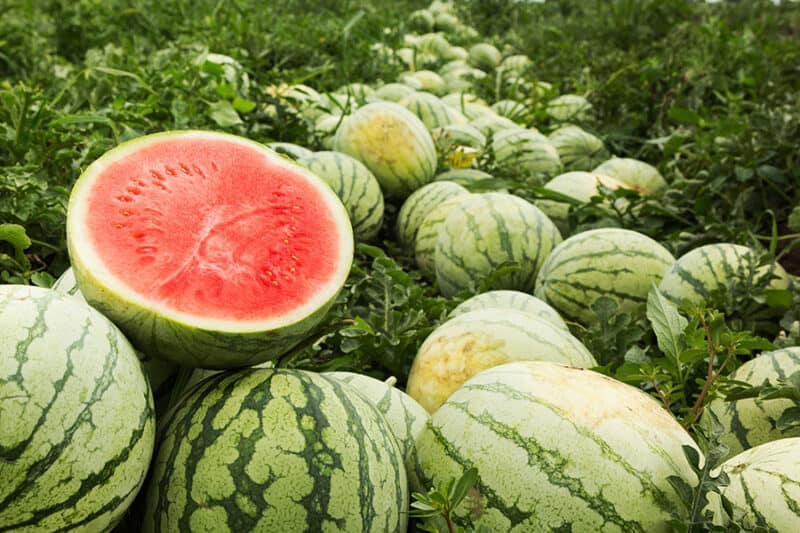
For a good seedless type, try Queen of Hearts, King of Hearts, or Jack of Hearts. Picnic melons include Black Diamond, Allsweet, and Jubilee. If you want yellow flesh, check out Tenderbaby, Yellow Gold, or Yellow Doll.
Winter Melon: Winter melons have a thick, hard rind that makes it so they can last longer without spoiling. They ripen during the summer, but with the right care, you can be eating them in the winter.
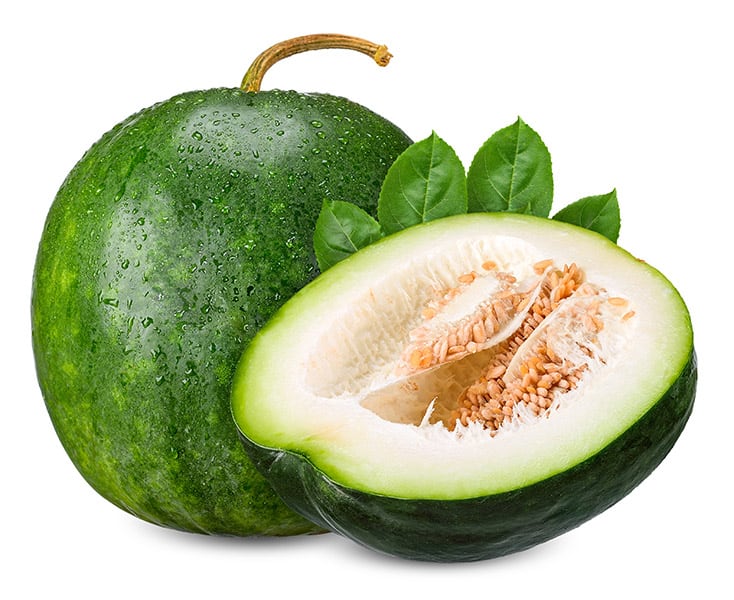
These melons are also called ash gourd, wax gourd, white gourd, and winter gourd. They are much more mellow than other melon varieties and are best roasted, boiled, steamed, or fried. They’re also delicious mixed into smoothies.
Planting Melon
Here’s how to get started with growing melon, regardless of the type you choose.
Where to Plant
Melons prefer a spot with fertile soil and lots of direct sunlight. Soil should drain well and not become waterlogged after a rainstorm or with too much watering.
Melons like well-drained soil with plenty of organic matter. Melons prefer soil with a pH of between 6.0 and 6.5.
Can I Grow Melon in My Area?
All melons grow in USDA agricultiural zones 4 through 10.
Melons grow best in warmer growing zones but can be grown in colder climates with careful planning and the help of crop protection tools.
It’s crucial that you pick the right kind of melon for your growing zone. If you live in a cold climate and choose a melon variety that takes longer than 90 days to harvest, the plant may not have enough time to mature.
How can you grow melons if you live somewhere with a short summer season? Here are a few ideas:
- Plastic mulch. It warms the soil significantly, keeps down weeds, and conserves moisture.
- Row covers and hoop tunnels. These tools warm the soil even when it’s still chilly outside. The fabric or plastic covering helps protect tender plants from frost and garden pests. Note: covers must be removed once melon plants start to produce flowers to ensure adequate pollination.
- Greenhouse. If you have space, a greenhouse is a great option. It helps gardeners lengthen the growing season by quite a bit.
Planting Seeds
Melon can be started indoors and transplanted or direct-seeded into the garden. Melons should be transplanted and direct sown when the weather has warmed considerably. Certain varieties of melon are more sensitive to cold temperatures than others (e.g., watermelon).
Direct sow seeds about a week before your area’s last frost date. If the soil still feels cold to the touch, wait before seeding. Melon seeds won’t germinate in soils below 70°F.
You can also start melon plants indoors, which allows you to get a jumpstart on the growing season. Melons, however, don’t take well to transplanting, so extra care is required to prevent disturbance to the roots.
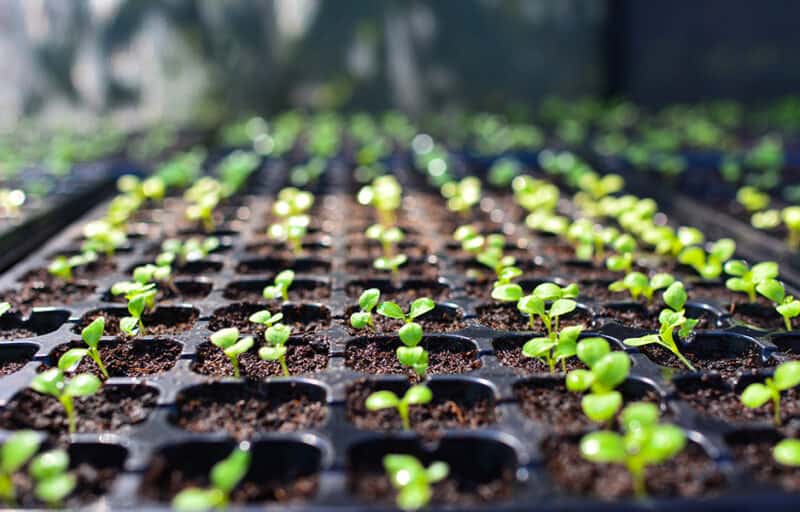
Start seeds indoors about a month before your average last frost date. Plant in large pots, so that you only need to transplant them once. I strongly recommend a heat mat for any type of temperature-sensitive plants (e.g., melons, eggplants, peppers, etc.).
If transplanting indoor starts, don’t forget to harden them off before setting them out in the garden.
Once fruits start to appear, you’ll need to provide support to prevent damage to the vines. Some baby melon varieties don’t require additional support, however.
Spacing
Melon plants should be placed at least two feet apart to allow for adequate growing room.
Caring for Your Melon Plants
Melons belong to the same family as cucumbers, so they have similar care requirements. To get the sweetest melons, sunlight and warmth are extremely important. Any kind of plant stress reduces the sweetness of harvested melons.
Watering
Water about one to two inches per week. Always water from below to prevent the foliage from getting wet, which can increase the risk of disease.
Watering should be reduced once fruits start to mature and ripen; this leads to sweeter fruits in the end. Excess water at the later stage of growth can cause fruits to crack or taste bland.
Weeding
Weed diligently to ensure your shallow-rooted melon plants have access to all the water and nutrition they need and aren’t outpaced by competing weed plants.
Mulching
Plastic mulch is your best option with melons because it keeps the soil warm and conserves moisture.
Pruning
Regular pruning is required to keep melon plants neat and tidy. You should also remove fruits on melon plants regularly so that the plant only hosts about four melons.
Problems and Solutions to Growing Melon
Melons are plants that bugs and diseases seem to like as much as humans do. Here are the most common things to watch for:
Squash Vine Borers
These little critters are the bane of my existence. In fact, calling them critters is far too kind. They’re vile.
They infest the vines of cucurbit family plants and destroy plants from the inside out. Prevention is the best remedy for this pest because once a plant is infested, it’s usually too late to fix the issue, and plant matter should be disposed of.
To head these bugs off, place yellow sticky traps in the garden and watch for the moth adults. If you see them, place row covers over you plants. You can also place row covers as a preventative, but remove them when the plants are blossoming.
Striped Cucumber Beetles
These striped bugs eat the foliage of cucurbit plants and also damage fruits and vines. Get rid of them to keep them from damaging your plants and spreading bacterial wilt and other diseases.
Use row covers to prevent cucumber beetles from infesting your plants. Sticky traps and handpicking are effective solutions for light infestations.
Damping-off
This dreading fungal infection targets vulnerable seedlings, especially those as tender as melon plants. Avoid damping off by never direct seeding in cool, wet soil.
You should also be sure to use clean potting soil and sterlize your pots and tools.
Powdery Mildew
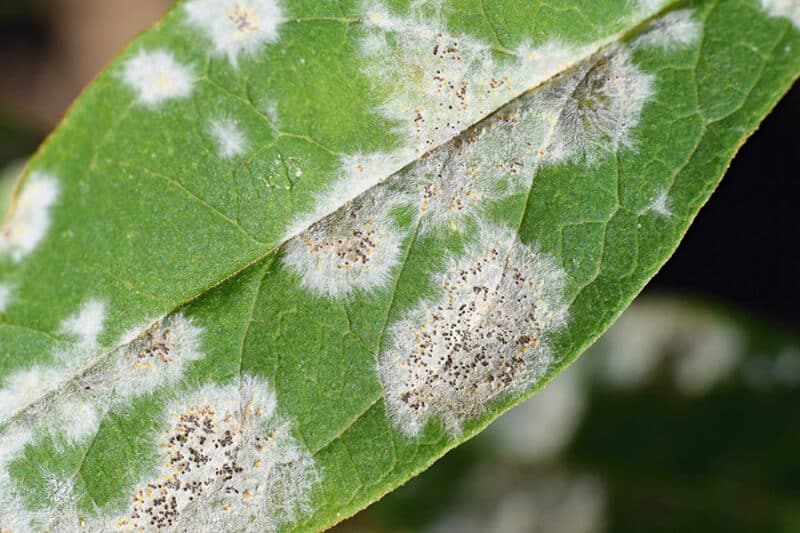
This super common plant disease produces white, flour-like patches on plant foliage. The best way to avoid powdery mildew is to buy disease-resistant melon varieties.
You can also trim away any infected leaves and spray plants with neem oil to slow its spread.
Bacterial Wilt
This bacterial infection causes plants to wilt and eventually die. Infected plants should be tossed to prevent the spread of disease. There is no cure.
You’ll know you have it if you spot dark green patches on leaves and eventually the plant starts to wilt overall.
Troubleshooting
There are no fruits on my melon plant. What’s going on?
Check the pH of your soil. If it’s below 6.0, melon plant leaves turn yellow, and the plant won’t produce fruits.
The weather may also be the culprit for limited fruit yield. Excessive heat or temperatures that are colder than usual may affect fruit set.
If your plant develops flowers but no fruit, it may be a pollination issue. To ensure pollination, you can hand pollinate your plants.
My melons taste awful and bland. Help!
If your melons don’t taste good, it may be because of poor weather (which is bad luck and difficult to remedy, sorry!). Poor tasting melons may also be due to disease or picking too early.
Companion Planting for Melon
Melons can use a boost from other plants. Here are the best companions to try out:
- Marigolds: they’re great pest deterrents and are an excellent companion for many garden crops, including melons.
- Lettuce: quick-growing lettuces with shallow roots are hardly competition for vining melons and can be grown in close-quarters without trouble.
- Radishes: the same goes for radishes, which also help suppress weeds when planted near melons.
Here are a few other happy companions for melons:
Don’t plant these next to melon plants as they compete for the same nutrients and don’t play nice together:
- Cucumbers
- Potatoes
Harvesting and Storing Melon
Melons won’t all mature at the same rate, so keep an eye on the fruits and be prepared to pick them when ready.
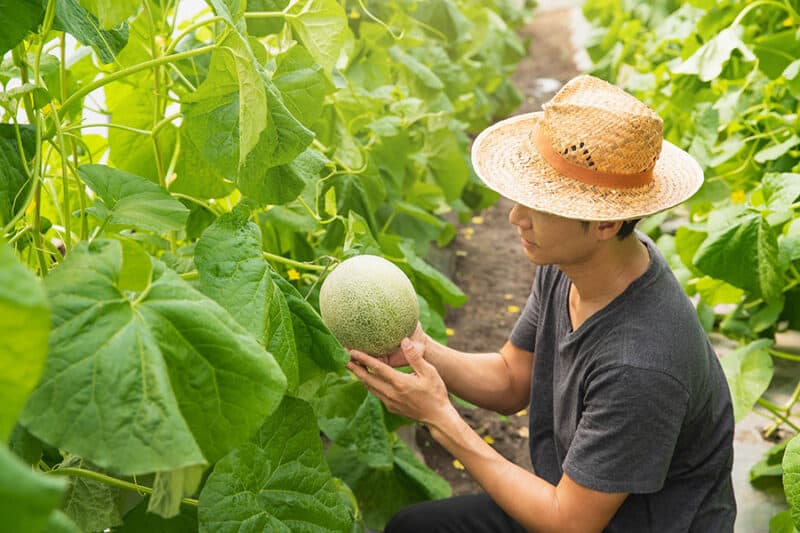
Once flowers have appeared (assuming they get pollinated), fruits mature about a month or so later. In cantaloupes and muskmelons, it’s easier to spot when a fruit is ready to pick. You’ll notice the netting changes and becomes rougher, and fruits appear yellower than before. Fully mature fruits slip away easily from the vine.
In watermelon and honeydew, fruits don’t come away from the vine as easily, but the surface of the fruit becomes rougher, duller in color, and leaves and tendrils near the fruit dry out and turn brown.
Melons are best eaten right away but keep in the fridge for a few days (watermelon and honeydew don’t keep as long in the fridge, though).
